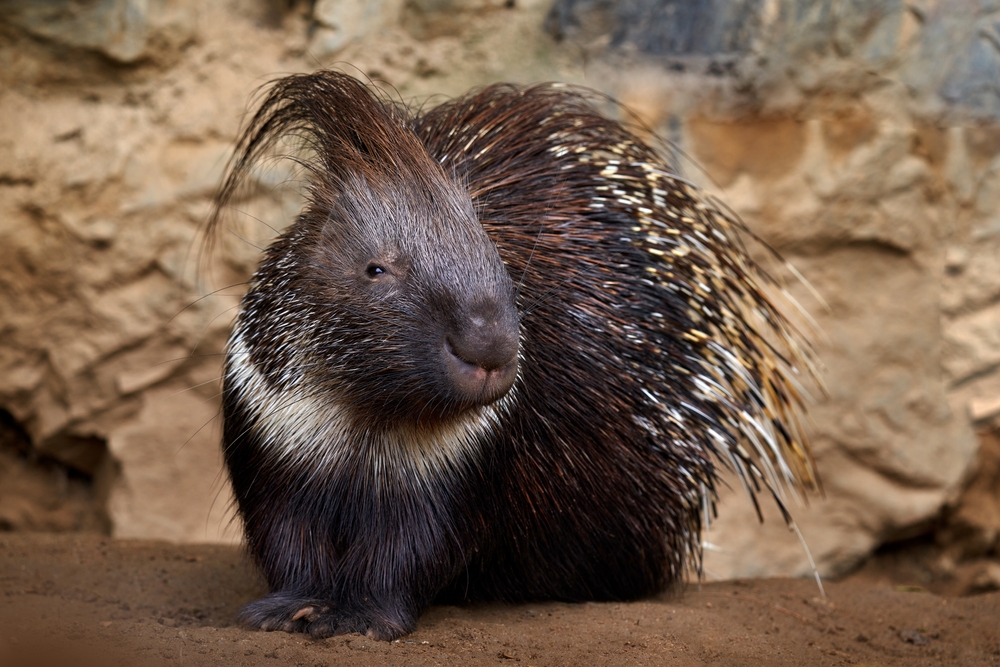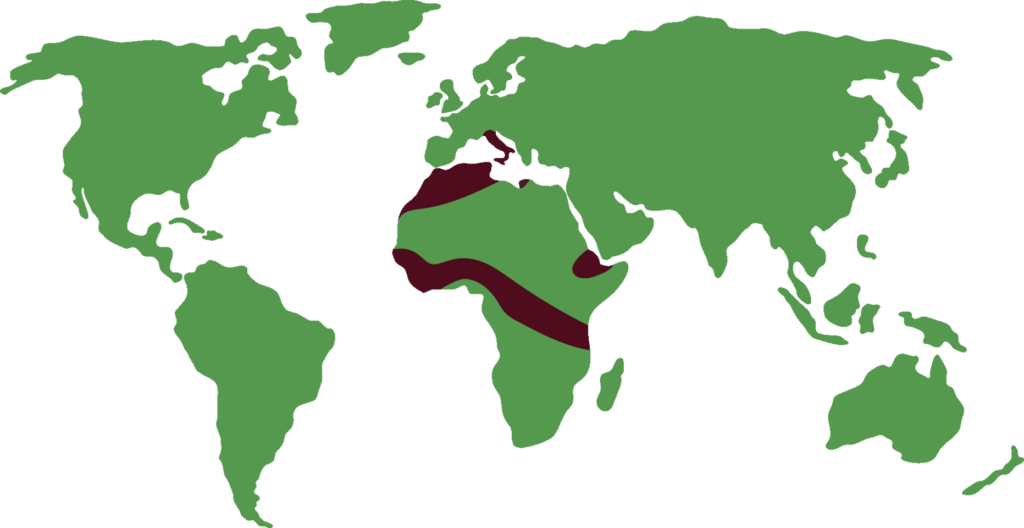CRESTED PORCUPINE
Hystrix cristata

lENGTH

60 cm
WEIGHT

15 kg
LIFESPAN

20 years
The crested porcupine, also known as the African crested porcupine, is one of the biggest rodents of the world. It can measure 60-90 cm in length and 25 cm in height.
General characteristics
The most distinctive feature of this species is the long, pointed spines that cover its back, flanks and tail. These spines are dark brown with black and white bands and can reach a length of up to 30 cm.
In addition to the spines, it has a thick, dense coat that can vary in color from light to dark brown.
The porcupine’s head is large and rounded with small ears. Its legs are short but sturdy with sharp claws which makes it easy to dig into the ground in search of food.
Feeding
It feeds mainly on roots, tubers, bark and fruits.
Behaviour
It is a terrestrial animal of nocturnal habits. It lives alone or in small family groups (a male, a female and their young) in burrows or caves. They rarely climb trees, but are good swimmers.
They are usually quiet and elusive, but when threatened, they roll the body into a ball exposing only the sharp and pointed spines. They may even growl, kick and shake the spines to produce a noise and confuse the predator.
Reproduction
Usually takes place once a year and the gestation of the females lasts seven to eight weeks. In a litter, 1-3 offsprings are born with soft barbs that harden after a couple of weeks.
Threats
It is generally common on their distribution area , although it is becoming increasingly rare in North Africa where there have been declines, probably as a result of persecution and exploitation for its meat and quills.
Distribution
As the name suggests, they are native to North Africa and sub-Saharan Africa. However, they can also be found in Europe, specifically in Italy.
They inhabit caves, rock crevices or burrows in rocky areas, forests and deserts.

Did you know?
Because porcupines´s teeth grow very fast, they are given bones and branches to gnaw on to prevent their teeth from overgrowing.
They may give off an unpleasant scent to defend themselves after producing sounds and erecting their quills.
The spines are not solidly implanted in the skin, which makes it easily detached to be anchored to the predator´s body.
Conservation status
